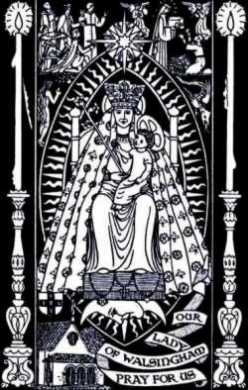Inside the Chapel.
The Methodist Chapel.
Over the fields towards the mill.
Yesterday I found myself with an hour or so to spare in North Cheshire, near Manchester Airport, so I took advantage of the brief intermission in the rain programme and went to Styal Village. Styal Village is a 'model village', much like a precursor of Port Sunlight, only on a smaller scale. It was built by Samuel Greg, proprietor of the neighbouring Quarry Bank Mill, as a village for his workers, as well as this, he built an apprentice house, a model farm and provided for the Spiritual needs of his workforce with two chapels. Oh, and a pub as well, called the Ship Inn. (In case you wonder why pubs in deeply land-locked areas are called the Ship, it's to do with the shovel used by pig-swill moving people, which were called ships, on account of their steepy curved sides. The pub landlady would ask them to leave them outside the pub in racks, so as to keep the smell inside down, as in 'you're not bringing that ship in 'ere my lad'. )
Like all model villages, Styal was as much as prison for the workers as modern-day Styal Women's Prison is for the inmates there. A comfortable house was, of course, provided, but very little in the way of wages were paid, so there was little chance of ever leaving the village, particularly as working hours were so long.
However, I had gone to wander around without my Guardian reader spectacles on, and to enjoy the peace and tranquility. I found my way to the Norcliffe Chapel, which is a non-conformist chapel, given for the worship of God, unfettered by any creed. While this sounds a lovely pastoral idyll for simple mill working folk (!), in reality, we are not given, as a nation, to free expression and poetic liberty, which in many cases explains the parallel demise of the non-conformist tradition in many places and the increasing formalisation of worship in many strands of that tradition (Methodism, United Reformed, etc). We Anglo-Catholics, of course, are aware of our heritage of opening great back street 'cathedrals' given to the worship of God in a credal, ritualistic way, and the great success of this style of worship in working class areas. A glimpse of heaven was available, for an hour on a Sunday and it was just enough to keep you going all week. How we are to reinvent ourselves in a multmedia age is our challenge for the future.
The Chapel was set in a very peaceful, wooded glade just a few minutes walk from the village and the porch of the church was cool and lit by rays of dappled sunlight, reflected from butterflies wings and was the perfect place for morning prayer. Reading my BCP office, as I do from time to time, it was difficult to imagine, there, at that time, 'our manifold sins and wickedness', but I had a fair stab at it! Quite what the non-conformists would have made of it is anybody's guess, but I felt safe from Cromwell's forces, as the door to the church was securely locked.
It came as a surprise, therefore, when, towards the end of reading the Athanasian Creed, I heard a noise inside the Chapel. Braving myself against the roundheads, I knocked on the door and discovered a couple of lovely ladies were arranging flowers inside, and they let me have a wander around and take some pictures. They tell me there is a service every week and they are very popular for weddings. I have to say, the interior did nothing for me and apart from a fine window at the East end, I preferred the outside.
Walking on, I crossed the bridge the Apprentices would have crossed when walking to Chapel on Sunday, and I reflected on how much more they would have enjoyed worship had they have been going to High Mass! Being a Socialist, mind you, I would say that, but I am unsure how Mr Samuel Greg would have received the co operative movement, which stemmed from our faith all those years ago in Blackpool and Salford and which we desperately need to re-find.


_Black_s_s_s_s_s.jpg)
